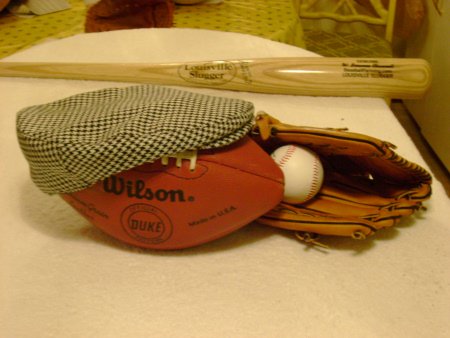Little League Drafts
Draft Rules For Little League Players
Are The Responsibility Of
The Local Chapters
Official Little League Rules
Are Not Distributed
To The General Public

In quest of Little League Drafts and the official Little League Draft rules it appears there is no such governing body establishing a finite set of official little league baseball rules for the general public consumption.
Upon posting of this page for all to use it was my intent to provide a laundry list of how to do and what not to do in your drafting plans for your Little League teams and league.
Unfortunately there are no hard and fast official rules on how local leagues must choose their little league players being as to my findings.
This modern era and little league baseball gets a little complicated at time and seems a far cry from baseball playground rules and how we simply organized to get a game under way back when all we had to say was, "Come on lets play ball."
|
Baseball Hitting
Hitting Coach Hitting Secret Power Hitting Power Baseball Bunting Baseballs Drag Bunt Bat Control Hitters Batting Order Bat Control Bat Speed... |
A league just starting or forming the best advice is to visit via the web other league sites and have them provide a helping hand and refer to their drafting rules scenario.
The local community Little League chapter organizations are pretty much given a green light to set their own policy and regulations within the umbrella of a United States Congress Chartered and sanctioned non-profit Big Brother.
I will offer this word of caution to the framers of your league or team little league drafts right wrong or indifferent the most controversy will center around getting those pitching aces with an art of pitching and drafting of team pitchers.
Human nature being what it is causes coaches to try and bend the adopted draft rules and selection method to ensure his teams selection gains a good crop of pitchers.
Little League Baseball is the name of a non-profit organization in the United States which organizes local children's leagues of baseball and softball throughout the USA and the rest of the world.
The group holds a congressional charter under Title 36 of the United States Code.see (1)
(1)36 U.S.C. §§ 130501-130513, Chapter 1305—Little League Baseball, Incorporated
The Little League was founded by Carl Stotz and the Bebble brothers in 1939 as a three-team league in Williamsport, Pennsylvania. The Little League Museum is also located on the Little League International Complex in South Williamsport. It provides a history of Little League Baseball and interactive exhibits for children.
The organization now has its headquarters in South Williamsport, directly across the Susquehanna River from the site of the original league; however, it continues to have a Williamsport postal address.
South Williamsport also hosts the Little League World Series at Howard J. Lamade Stadium and Little League Volunteer Stadium.
Little League Baseball encourages volunteers to run Little League programs these volunteer groups get the advantage of putting together their own leagues Little League Drafts.
A provision of the official national Little League rules holds that “[a]t no time should payment of any fee be a prerequisite for participation in any level of the Little League program.”
This stipulation stems from Stotz's personal experience of poverty in the Great Depression [2].
It is easy to lose sight of the primary reason for little league baseball and that is to teach youngsters how to play baseball and to ensure every youngsters is afforded this opportunity and the thrills of freely playing little-league-baseball.
New York Times, quoting p. 39 of the 2008 rule book. Mathews notes that in fact most local leagues violate or bend this rule.
Op-Ed Contributor
There’s No Paying in Baseball
By JOE MATHEWS Published: August 16, 2008 Los Angeles
THIS year’s Little League World Series, which began on Friday, is a lavish, nationally televised American sporting event. At the site of the series in South Williamsport, Pa., there is a tent for the tournament’s corporate sponsors to show off their products, an instant-replay system to decide close calls and a perfectly groomed, two-stadium baseball complex.
For all of the tournament’s seductive gloss, Little League was born in poverty. In 1938, Carl E. Stotz, a Williamsport oil company clerk, lost his job when the business shut down the plant where he worked. As Stotz explained in his 1992 autobiography, "A Promise Kept," when he wasn’t working the odd job, he — at the urging of two baseball-crazy young nephews — devoted much of his time to planning the very first Little League.
This Carl Stotz promise of no fees requirement should be integral to all Little League Drafts.
And when he organized the first games in 1939, knowing first hand how tough the times were, he refused to charge parents for the privilege of having their children in his league. He relied on donations from local businesses instead.
By the early 1950s, Stotz had turned Little League into an international organization, and he enshrined his no-fee policy as an official rule. Even though Stotz eventually broke with Little League after a bitter fight with the organization’s board, his rule remains. You can find it in on page 39 of this year’s 88-page Little League rule book.
"At no time should payment of any fee be a prerequisite for participation in any level of the Little League program," the rule reads in capital letters. Although the rule permits individual leagues to request a fee of parents, "it is recommended that no fee be collected."
The rule may come as a shock to parents who signed up their children to play Little League this year. Families routinely are required to pay fees that can range from $10 to, in one New York City league, $250 per child.
I examined registration forms from more than 400 Little League organizations around the country, and I found only a handful of leagues that do not charge a fee. Most of the fees were around $100. I could not find a single registration form disclosing the fact that a fee was optional. Several suggested the fee was mandatory.
"Any forms received without payment will be rejected," reads the registration form for a league in Fair Lawn, N.J.
This above statement is bad Karma for Little League Drafts.
Officials at Little League headquarters in Pennsylvania said plainly that the rule remains very much in effect. But Little League is a decentralized organization, and in practice, local leagues are free to set their own budgets and mandate fees. Most leagues need tens of thousands of dollars each year to cover the costs of facilities, uniforms, equipment and field maintenance. In the Southern California league in which I have long coached, the $125 fee does not cover all expenses. Our league has to solicit donations to balance its books.
Such double talk as above should be eliminated and explicitly spelled out in the Little League Drafts of any league.
But as a condition of their charters, individual leagues are required to honor all the rules. It would be in Little League’s interests to advertise the rule widely. The organization faces competition from other sports and other youth baseball programs. While these programs sometimes offer financial assistance to poorer families, the promise of free baseball playing should give Little League Drafts a competitive advantage.
Parents who can afford the fees ought to contribute. Leagues such as mine should even consider raising fees to cover the true costs of their programs. But all leagues should make clear that children are still welcome even if their families don’t have the money. Parents and guardians who don’t pay should be strongly urged to volunteer their time, as the Little League rule book suggests.
And young ballplayers should feel free to remind their parents and Little League officials that there is no financial excuse for keeping them off the field. To insist on enforcing the no fee rule in Little League Drafts is to fulfill the promise of the Depression-era clerk who made free Little League the right of every child.
Joe Mathews is a senior fellow at the New America Foundation
"Brother can you spare a dime" Little League Baseball is headed for a melt down with all other high flying economic endeavors.
My sentiments is to not shed a moment of frustration trying to figure the little league drafts.
Instead of the controversy of fees collection it should be centered on such things as aluminum vs wood bats as a point of contention and concern.
Could we ever revert back to those happy days of baseball made up rules and get back to really let the kids enjoy their games of baswball?
Learn more about how to play baseball as you leave this info on Little League Drafts
Batter Up----Let's Play Ball....
Report any broken links to Baseballfarming would be a big help please Contact Us.
Go Shopping Save Money Baseball Equipment And More-- Then Figure Little League Draft Rules.

